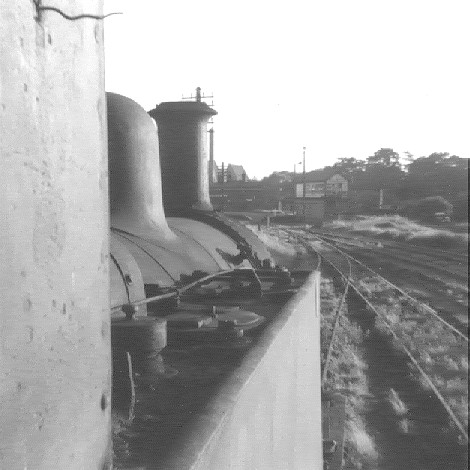Midland Railway 2441 Class on:
[Wikipedia]
[Google]
[Amazon]
 The
The
Class 3F-E Details
at ''Rail UK'' {{Midland Railway Locomotives 2441 0-6-0T locomotives Vulcan Foundry locomotives Railway locomotives introduced in 1899 Standard gauge steam locomotives of Great Britain Scrapped locomotives
 The
The Midland Railway
The Midland Railway (MR) was a railway company in the United Kingdom from 1844. The Midland was one of the largest railway companies in Britain in the early 20th century, and the largest employer in Derby, where it had its headquarters. It ama ...
(MR) 2441 Class was a class of steam locomotive. Introduced by Samuel Johnson in 1899, originally with round-topped fireboxes. Henry Fowler later rebuilt them with Belpaire firebox
The Belpaire firebox is a type of firebox used on steam locomotives. It was invented by Alfred Belpaire of Belgium in 1864. Today it generally refers to the shape of the outer shell of the firebox which is approximately flat at the top and s ...
es. They were given the power classification 3F. The LMS Fowler Class 3F of 1924 was based on this design.
Numbering
Sixty locomotives were built. Initially numbered 2441–2460, 2741–2780; they were renumbered 1900–1959 in the Midland Railway's 1907 renumbering scheme. All passed to theLondon, Midland and Scottish Railway
The London, Midland and Scottish Railway (LMSIt has been argued that the initials LMSR should be used to be consistent with LNER, GWR and SR. The London, Midland and Scottish Railway's corporate image used LMS, and this is what is generally ...
, initially retaining their MR numbers, before being renumbered 7200–7259 between 1934 and 1937. All passed into British Railways
British Railways (BR), which from 1965 traded as British Rail, was a state-owned company that operated most of the overground rail transport in Great Britain from 1948 to 1997. It was formed from the nationalisation of the Big Four British ...
ownership in 1948 and were numbered 47200–47259.
Withdrawal
Withdrawals started in 1954, with three locomotives still in service on 1 January 1966. All werescrap
Scrap consists of recyclable materials, usually metals, left over from product manufacturing and consumption, such as parts of vehicles, building supplies, and surplus materials. Unlike waste, scrap has monetary value, especially recovered m ...
ped, though several later LMS locomotives have survived.
Accidents and incidents
*On 12 July 1932, locomotive No. 1909 was hauling a freight train that collided with a passenger train that had been derailed bycatch point
Catch points and trap points are types of turnout which act as railway safety devices. Both work by guiding railway carriages and trucks from a dangerous route onto a separate, safer track. Catch points are used to derail vehicles which are ...
s at station. It was also derailed, as were five wagons. There were no injuries.
References
* * * *External links
Class 3F-E Details
at ''Rail UK'' {{Midland Railway Locomotives 2441 0-6-0T locomotives Vulcan Foundry locomotives Railway locomotives introduced in 1899 Standard gauge steam locomotives of Great Britain Scrapped locomotives